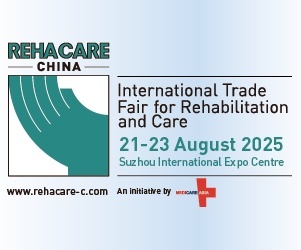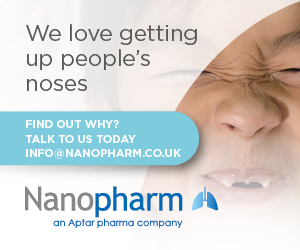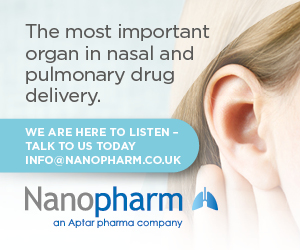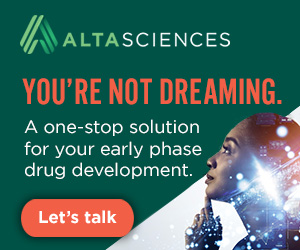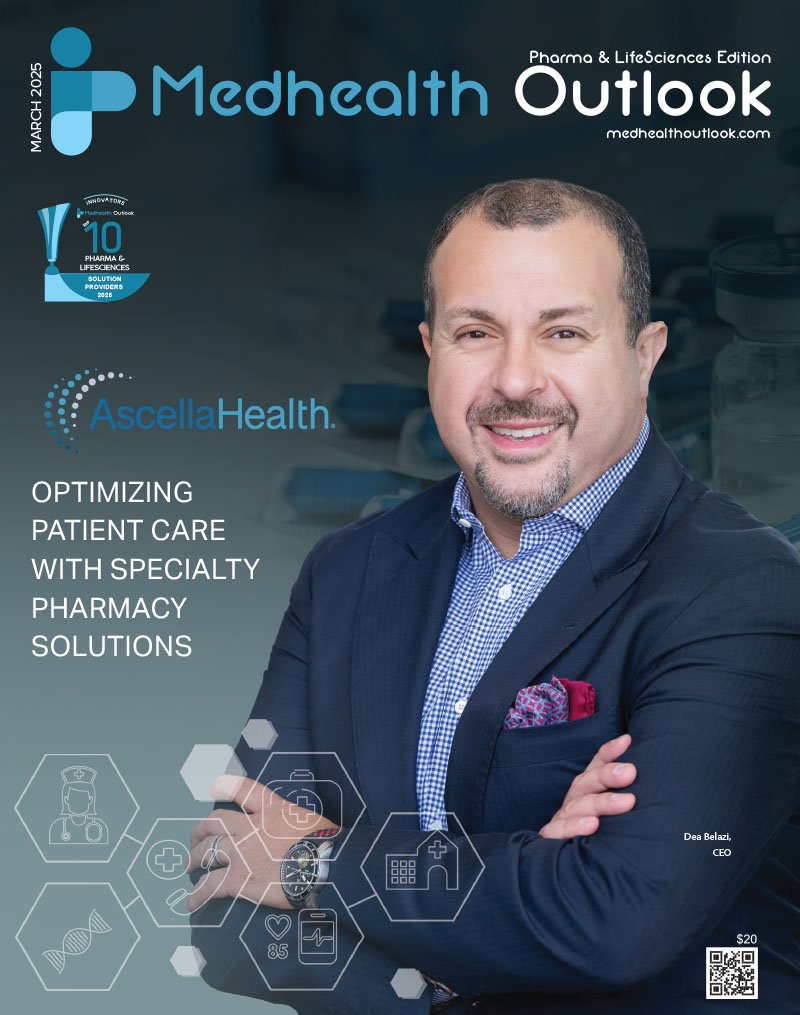Pulmonary Arterial Hypertension (PAH) is a rare disorder affecting 15 to 50 persons per million within the US and Europe. It is a complex and devastating disease that causes progressive vasoconstriction and vascular remodeling of the distal pulmonary arteries. Currently, there is no cure, and the majority of patients with PAH go on to develop right heart dysfunction leading to death.
The treatment landscape for PAH has changed greatly over the past 20years,with the discovery of three key pathological processes –prostacyclin, nitric oxide, and end othelin pathways – and the development of targeting treatments. There is still no consensus on the most effective treatment for PAH, but the guidelines typically recommend the use of two or three medications in most patients, each one of which can cause a number of undesirable side-effects. Although the available treatments can be administered by various routes, inhalation typically minimizes severe symptoms including flushing and diarrhea.
As PAH is a disease of the lungs, local treatment by delivery of the active ingredient directly to the site of action is favorable for its therapeutic benefits. The lungs offer a large surface area for absorption (if it were flattened out, it would be the about the size of half a tennis court). They also have high permeability, good irrigation and present a less harsh enzymatic environment. Administering drugs directly to the lungs therefore provides greater pulmonary drug concentrations, alongside better drug absorption. Additionally, it enables a quick onset of action in the lungs, while avoiding the drawbacks posed by systemic delivery and the first pass metabolism. Hence, lower doses are required, resulting in the decrease in side effects that is seen when the drugs are given via inhalation.
Currently, the evolution of pre-clinical and clinical research on PAH has facilitated the identification of novel biologic pathways of vascular and endothelial dysfunction, leading to the development of novel therapies. Moreover, the pipeline reported in August 2022 by Delve Insight highlights the potential of the inhalation route. As an example, seralutinib (Gossamer Bio, Inc.) proved an effective treatment of severe PAH in two animal models. Additionally, vardenafil administered as a dry powder inhaled treatment (Respira Therapeutics) has been given to patients in the clinic. More importantly, a novel inhaled dry powder formulation of imatinib (Aerovate Therapeutics, Inc.) was generally well tolerated by healthy adult volunteers, with no serious adverse events. In the light of data from these studies, along with the clear advantages of the inhalation route, the rationale for an inhaled formulation suitable for novel PAH therapeutics is evident.
If a therapeutic agent is to be delivered successfully in this way, it is essential to consider the natural mechanisms that occur within the lung when designing the final product. There are three main ways in which the active agent can be delivered to the lung surface: nebulizers, pressurized metered dose inhalers (pMDIs),and dry powder inhalers (DPIs). DPIs deliver the drug to the lung in metered doses as a dry powder from a container or capsule, providing good aerosolization without a hydrofluorocarbon (HFC) propellant (powerful greenhouse gases). They offer both higher efficiency and better reproducibility when compared with pMDIs, while requiring minimum patient/device coordination when taking the dose. DPIs are an effective method for treating respiratory diseases like asthma, chronic obstructive pulmonary disease and cystic fibrosis, as well as delivering antibiotics and antivirals. Additionally, as the drug is in a solid form in a DPI, it is more stable than the liquid form found in nebulizers.
When treating PAH, the required dose for lung administration can vary by orders of magnitude, depending on the potency of the drug. This means there are two main strategies that are taken when developing a dry powder for inhalation:
A carrier-based approach is used for most of the low dosage products on the market. A carrier-based formulation consists of a mixture of micronized crystalline API (sizes between 0.5 and 5 μm to target the deep lung), and an excipient (lactose monohydrate in most cases). The excipient acts as the carrier, and enables the micron-sized high adhesive and cohesive API particles to reach the deep lung. Carrier-based formulations are useful for PAH treatment when the target dose is low (<3 mg per actuation is generally considered a low dose), as is the case for Respira’s vardenafil inhalation powder. Here, up to 0.6 mg of vardenafil was blended with coarse lactose monohydrate particles, and gave a delivery of 30% of the available dose to the lung after actuation, which was sufficient for the study. Both coarse carriers and inhalable particles can be prepared by micronization, a long-established process and cost effective technology.
In contrast, the novel PAH treatments seralutinib and imatinib both require a larger dose– 45 and 90 mg twice daily for seralutinib, and 200 to 400 mg daily doses for imatinib. As a result, tailored formulations with optimized drug delivery are desirable to ensure an effective and reproducible treatment is achieved. Spray-drying is increasingly being used to manufacture engineered particles for inhalation that have tailored compositions and morphology. A number of spray-dried technology platforms have already had a remarkable impact on the treatment of pulmonary and other diseases. PulmoSphereTM technology, for example, underpins the TOBI® Podhaler® in the management of cystic fibrosis patients with Pseudomonas aeruginosa, and ARCUS® technology is used in InbrijaTM for the treatment of Parkinson’s disease.
Overall, spay-drying facilitates the production of inhalable particles with controlled particle size, solvent content, morphology, and density by fine-tuning formulation composition and process parameters. Ultimately, this leads to a drug product with improved targeted lung delivery, while maintaining the nominal dose. This gives better overall safety for the drug product, a longs idea reduction in side-effects, which is extremely beneficial for PAH patients. Spray-drying also offers benefits to the manufacturer: overall, it is an easy to operate, flexible, readily scalable, and time-effective technology.
There is a huge need for novel PAH treatments to improve the quality of life and reduce mortality in PAH patients. DPI formulations have the potential to be an excellent option for the efficient targeted delivery of both low and high doses of therapeutics, and can reduce the incidence of side-effects. Although considerable effort is required at the outset to gain a good understanding of the formulation, dose and process requirements, this effort will be well worthwhile if the result is a dosage form that offers real benefits to patients with PAH.





